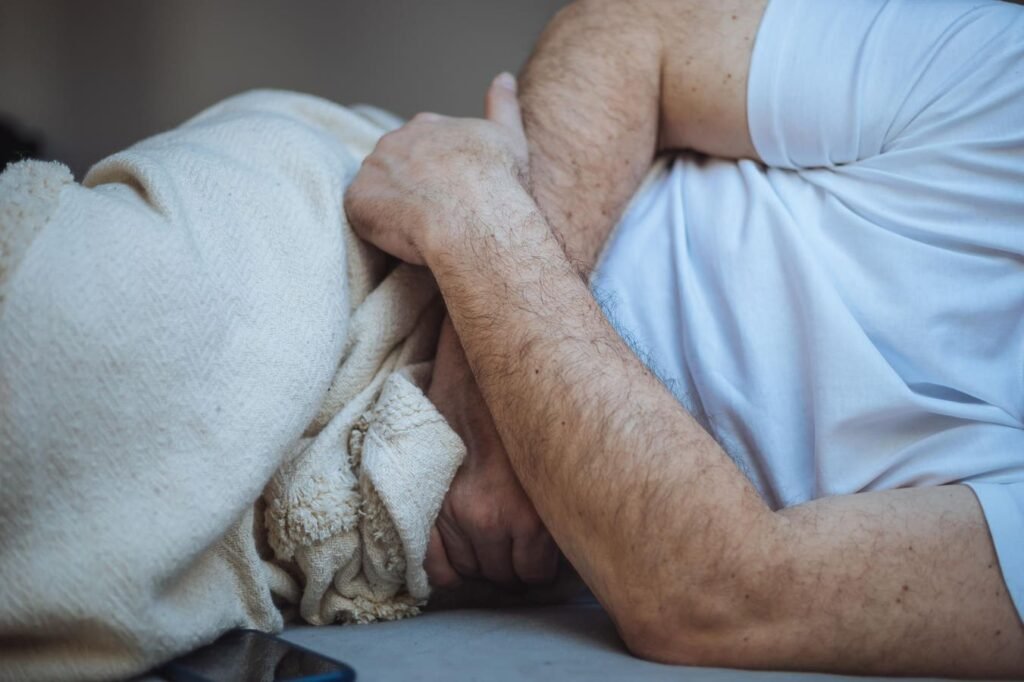A man is suffering from abdominal pain lying on the bed crossed his arms in the stomach
getty
The “horrible” vomiting bug norovirus continues to strike as winter enters its final weeks. Like flu and RSV, this seasonal illness has surged in several northern hemisphere countries this winter.
In England, more people were hospitalized with the gastric illness last week than ever before, official data shows. Cases appear to have fallen in the U.S. in recent weeks, but rates are still high.
The most recent statistics show the percentage of positive norovirus tests was 21% in the U.S. in the week ending February 8. That’s a decrease from a peak of 26% recorded at the end of December, but it’s actually slightly up on the figure recorded in the week ending February 1 (20%).
The NoroSTAT system, which reports confirmed and suspected norovirus outbreaks across 14 states, recorded 114 in the last week of January — the most recent data available. This is a drop from 189 the week before, but still far higher than the same week in every year since the system began in 2012. The maximum number of outbreaks recorded in any week before the 2024-25 season was 107.
Intense Outbreaks Of Seasonal Illnesses
It’s been an intense winter so far for seasonal illnesses as viruses like flu circulate in their highest levels for years. Hundreds of thousands of Americans have already caught flu this winter, with tens of thousands thought to have tragically died.
England’s public health body, the National Health Service, used the term “tripledemic” (and later “quad-demic”) last fall to describe the high levels of multiple illnesses — flu, norovirus, COVID-19 and RSV — it expected to circulate in the colder months.
The country’s Chief Medical Officer Stephen Powis said it was “concerning to see the number of patients with norovirus hit an all-time high,” with hospital staff working “tirelessly” to treat patients with the “horrible” bug alongside other winter illnesses.
Winter illnesses typically recede as spring approaches, tailing off in April and May, so they’re still a concern for hospitals.
How To Protect Against Norovirus
Norovirus, which is normally transmitted through tiny particles of infected faecal matter, can cause symptoms like stomach pain, vomiting, nausea, fever and body aches. It can lead to dehydration and, in severe cases, require hospitalization.
Good hygiene practices can help protect against the illness. This means regular handwashing and avoiding the sharing food, drinks or utensils with others — particularly if they have symptoms.
“Alcohol gels do not kill norovirus,” U.K. government epidemiologist Amy Douglas said in a statement. “Wash your hands with soapy warm water and clean surfaces with bleach-based products where possible to help stop infections from spreading.”
Any sheets or clothes contaminated with vomit or faeces should be washed as soon as possible on a hot laundry cycle. The CDC recommends wearing rubber gloves when touching the fabric and washing your hands after.
Norovirus also spreads easily via food, so make sure to wash vegetables thoroughly to remove any germs and ensure shellfish and oysters are cooked through before eating.
If you have symptoms of norovirus, it’s best to “avoid mixing with other people until you have not had symptoms for two days,” according to Stephen Powis.


